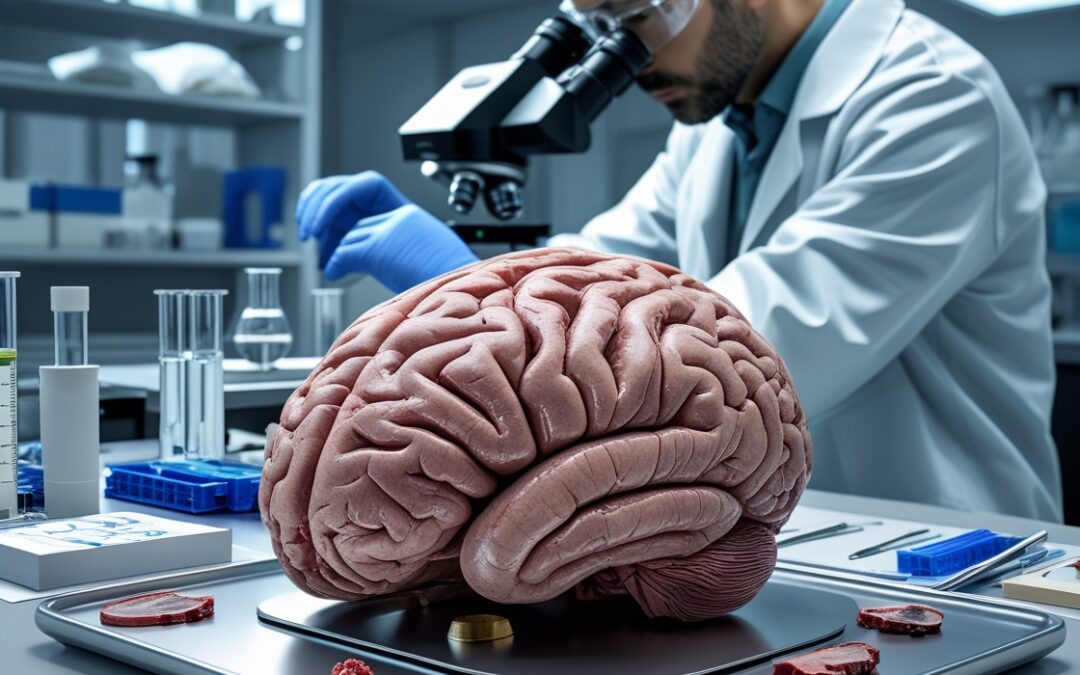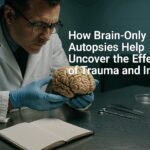A brain-only autopsy is a specialized postmortem examination focused solely on the brain. Unlike a full autopsy, which examines the entire body, a brain-only autopsy isolates the brain for analysis, helping medical professionals and families understand neurological disorders or brain-related causes of death. This type of examination plays a crucial role in diagnosing diseases like Alzheimer’s, Parkinson’s, Chronic Traumatic Encephalopathy (CTE), and other neurological conditions that can only be confirmed after death.
Many brain diseases present similar symptoms, making diagnosis difficult during life. In some cases, patients may suffer from multiple overlapping conditions, such as Alzheimer’s and vascular dementia. A brain-only autopsy provides a final, definitive diagnosis, eliminating uncertainty and allowing families to understand the true nature of their loved one’s condition. Additionally, it aids in forensic investigations where brain trauma may be a factor in determining the cause of death.
The Purpose of a Brain-Only Autopsy
A brain-only autopsy serves several important medical and personal purposes:
- Neuropathology Examination: A detailed brain analysis can reveal conditions that were undiagnosed or misdiagnosed during life.
- Brain Disease Diagnosis: Provides a definitive diagnosis of neurodegenerative diseases such as Alzheimer’s, Parkinson’s, or frontotemporal dementia.
- Neurological Disorder Postmortem Investigation: Helps researchers understand how neurological disorders progress and affect brain function.
- Family Insight and Medical History: Offers crucial information for family members regarding potential hereditary conditions.
- Legal and Insurance Cases: Can provide evidence in cases involving brain trauma, medical malpractice, or workers’ compensation claims.
- Psychiatric Conditions: Some psychiatric disorders, such as schizophrenia and major depression, show physical changes in the brain that can be analyzed postmortem.
- Toxicology and Drug Influence Studies: Determines whether substances, such as medications, drugs, or toxins, affected brain function.
- Advancing Neuroscience Research: Supports scientific research into brain diseases and disorders by providing essential postmortem data.
Brain-Only Autopsy vs. Full Autopsy
While a full autopsy examines all major organs to determine the cause of death, a brain-only autopsy focuses exclusively on the brain. This distinction is important for families who seek specific answers about neurological conditions without a complete body dissection. It is also a less invasive option for those with cultural or religious concerns regarding full autopsies.
In some cases, a brain-only autopsy may be conducted alongside a limited autopsy that examines other specific areas of the body related to neurological conditions, such as the spinal cord or cerebrospinal fluid. This approach can provide a more comprehensive understanding of neurological disorders while still respecting family wishes.
When to Request a Brain-Only Autopsy
A brain-only autopsy is typically requested in the following scenarios:
- Unexplained Cognitive Decline: When a patient exhibited dementia-like symptoms but was never officially diagnosed.
- Sudden Behavioral Changes Before Death: If a loved one experienced unexplained aggression, mood swings, or hallucinations.
- Athletes and Military Personnel: Those exposed to repeated head trauma may develop CTE, a condition that can only be confirmed postmortem.
- Medical Research Participation: Families may choose to contribute to ongoing research on neurological disorders.
- Legal and Forensic Cases: When cause of death involves potential brain injury or medical malpractice claims.
- Rare or Complex Neurological Cases: When doctors suspect a rare condition, such as Creutzfeldt-Jakob disease, but were unable to confirm it during life.
- Unexplained Seizures or Neuromuscular Disorders: To determine whether epilepsy, multiple sclerosis, or similar conditions were a contributing factor in death.
The Brain Autopsy Procedure
The brain-only autopsy follows a systematic process:
- Consent and Documentation: The next of kin must provide legal consent for the procedure.
- Brain Tissue Examination: A neuropathologist carefully removes and preserves the brain for analysis.
- Postmortem Brain Evaluation: The brain undergoes a detailed examination, including histological studies, toxicology tests, and imaging.
- Microscopic Analysis: Brain tissue samples are analyzed under a microscope to detect changes at the cellular level.
- Toxicology Testing: Screens for drugs, alcohol, or toxins that may have affected brain function.
- Advanced Imaging: Techniques such as MRI and CT scans may be used to detect abnormalities before dissection.
- Final Diagnosis and Report: Findings are compiled into a report, which is shared with the family and medical professionals.
Common Conditions Diagnosed Through a Brain-Only Autopsy
A brain-only autopsy can provide clarity on various conditions, including:
- Alzheimer’s Disease: Identification of amyloid plaques and neurofibrillary tangles.
Parkinson’s Disease: Detection of Lewy bodies and degeneration in specific brain regions. - CTE Postmortem Diagnosis: Confirms brain damage caused by repeated concussions.
- Stroke or Aneurysm: Determines if cerebrovascular issues contributed to death.
Brain Tumors: Identifies malignancies that may have caused symptoms or complications. - Multiple Sclerosis (MS): Confirms demyelination in brain tissue.
- Huntington’s Disease: Detects genetic neurological degeneration.
- Toxic Encephalopathy: Determines if exposure to harmful substances caused brain damage.
- Vascular Dementia: Identifies cerebrovascular damage contributing to cognitive decline.
- Infectious Brain Diseases: Diagnoses conditions such as Creutzfeldt-Jakob disease or viral encephalitis.
Medical and Personal Reasons for a Brain-Only Autopsy
- Closure for Families: Helps loved ones understand the cause of neurological decline.
- Advancements in Brain Pathology Investigation: Contributes to research and development of treatments.
- Insurance and Legal Clarity: Provides documentation for medical malpractice cases or insurance claims.
- Genetic Insight: Identifies hereditary neurological disorders that may affect family members.
- Medical Training and Research: Some families choose to donate the brain for scientific study, contributing to future advancements in neurology.
- Confirmation of Prior Diagnoses: Ensures accuracy in medical history for family records.
- Educational Contributions: Helps medical students and professionals better understand neurological disorders.
How to Arrange a Brain-Only Autopsy
-
- Contact a Neuropathology Specialist: Reach out to a private autopsy service or medical examiner specializing in brain evaluations.
- Legal Authorization: The next of kin must sign a consent form.
- Arrange for Body Transportation: The deceased may need to be transported to a facility where the procedure is performed.
- Discuss Costs and Timing: Private autopsy services may charge a fee, which varies depending on the complexity of the examination.
- Consider Tissue Donation: Some families choose to donate brain tissue for research, aiding in studies of neurological diseases.
- Seek Support for Genetic Counseling: If hereditary conditions are detected, genetic counseling may be recommended for family members.
Conclusion
A brain-only autopsy is an essential tool for diagnosing neurological disorders postmortem, providing families with answers, advancing medical research, and aiding legal and insurance claims. Whether investigating Alzheimer’s, CTE, or unexplained cognitive decline, this procedure offers definitive insights into the condition of the brain. For families seeking a thorough yet minimally invasive postmortem examination, a brain-only autopsy is a valuable option.
As medical science advances, the importance of brain autopsies continues to grow. Researchers rely on these postmortem evaluations to develop better treatments and preventive strategies for neurological diseases. By choosing a brain-only autopsy, families not only gain clarity about their loved one’s condition but also contribute to a broader understanding of brain health, benefiting future generations.








